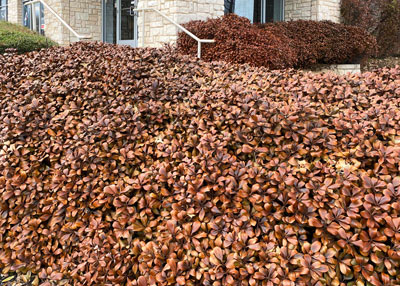

The solution is warm nights, warm days, and longer day lengths. Watering, pruning, or fertilizing won’t make it happen any quicker. There is absolutely nothing you can do to speed up this freeze damage/healing process. It’s all about holding up to ice and snow but all have always been cold hardy here for thousands of years. Note that nature made sure that short leaf pine occurred further north, loblolly pine with medium length needles occurred farther south, and longleaf pine occurred the most south. Our native pines along with all our other native plants have learned to survive periodic Arctic blasts. This is mostly likely just freeze damage to the needles, but the buds and stems should be fine. Pines: Pine in some areas have turned brown. Friend Neil Sperry says they’ll be fine, so we’ll all hope for the best! Live oaks are coastal trees not used to zero-degree weather. There however many be varying degrees of damage including death like there was in Dallas during the 1980s when all the bark eventually popped off, but once again nothing you can do right now but take a cold tater and wait. Live oaks: All foliage will be lost which would have been lost when the new foliage came out in spring anyway.

Unfortunately, fruit production will be limited. Open flowers and fat buds on blueberries, peaches, and pears froze, but the trees should be alive and sprout as normal. Once again, do nothing for now and prune back to live growth when they sprout. Most citrus above I-10 will have severe damage. Sagos aren’t true palms, are less cold hardy, and back then were only cold hardy from I-10 south.įruit trees: Most are cold hardy except citrus, pomegranates, olives, and figs which will have varying degrees of damage and death. Historically the only palms reliably cold hardy here in northeast Texas and the only ones to survive zero degrees in the 1980s were Mexican/Texas sabal palms, Brazoria palms, dwarf palmettos, and a number of windmill palms. It will take months to see if they resprout. Palm Trees and Sago “Palms”: Many will be damaged or dead but do nothing but cut off the dead fronds for now. Deciduous magnolias lost their flower buds but will be fine. Magnolias: Other than ice damage to southern magnolias, they appear to be fine like many native plants are. Once you see the stems split open and the plants resprout, cut them back to that point, even if it’s at the ground. English ivy may have had foliage damage only. Still others like coral vine and creeping fig may have been killed. Vines: Native vines like coral honeysuckle and crossvine may be just fine while others like Carolina jessamine and confederate jasmine may be damaged. Once you see which stems are brown/dead and which stems are green and resprouting, cut them back with loppers or hand pruners, sprinkle a bit of lawn fertilizer, and they should look nice again by fall. Hybrid teas, grandifloras, floribundas, polyanthas, and modern shrub roses like Knockouts and Drifts are considered more cold hardy while uniquely Southern roses like Teas, Chinas, Noisettes, Banksias, etc. At first glance it appears that many will freeze back to and resprout from the snow line.

Roses: Many roses in Texas and the South have taken a severe hit and will have varying degrees of freeze damage. Most broadleaf evergreens prefer milder climates while narrow leafed evergreens and deciduous plants are more adapted to colder climates. Many of these plants are from milder parts of southeastern Asia and simply aren’t used to zero degrees.

There will most likely be no blooms this year and all old foliage will most likely fall off.
Indian hawthorn texas freeze full#
You can find the full article here.Įvergreen Woody Shrubs (abelia, Asian jasmine, azaleas, banana shrub, camellias, Elaeagnus, fatsia, fig ivy, gardenias, Indian hawthorn, Japanese blueberry, Ligustrum, loquat, loropetalum, oleander, pittosporum, privet, sasanquas, sweet olive, Texas sage, viburnum, wax myrtle, etc.): Wait until they start to resprout from the existing stems or the ground, then cut away dead and leave what is alive and growing. While the truth of the matter is that time will tell in many instances, Texas A&M University recently released some really good, plant specific guidance on what to expect in the coming months. Many of our clients has asked what the potential effect of those temperatures will have on their trees and palms in the coming months and years. But the memory of the hard freeze we experienced is still fresh. Spring has sprung and we are seeing new, green foliage on many plants, shrubs, trees and flowers.


 0 kommentar(er)
0 kommentar(er)
